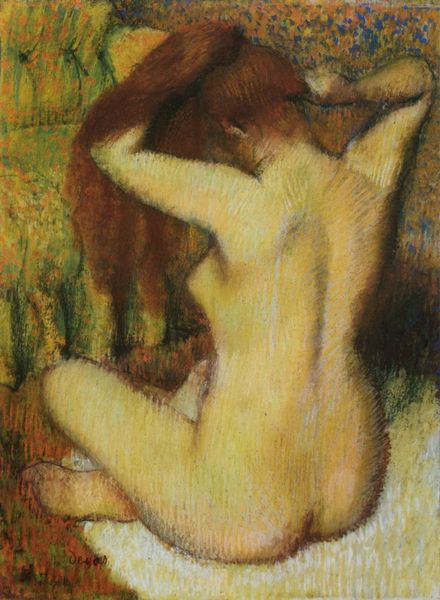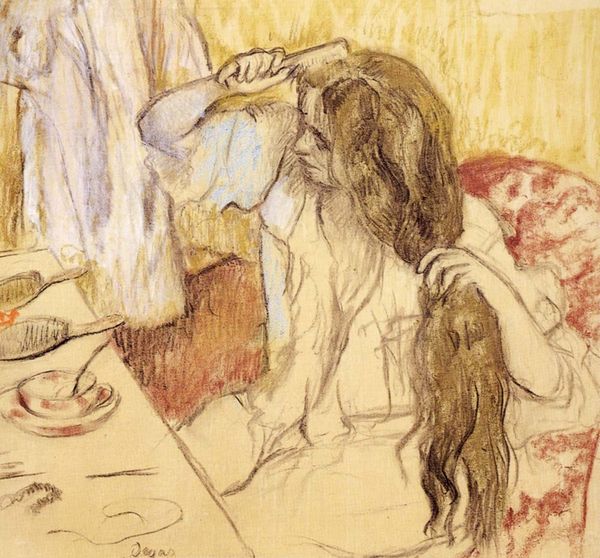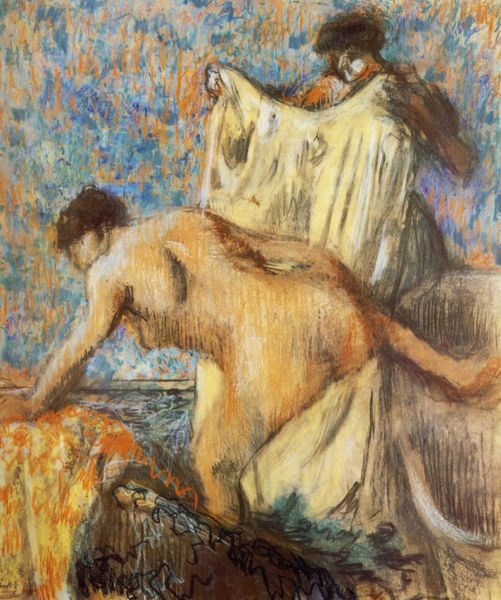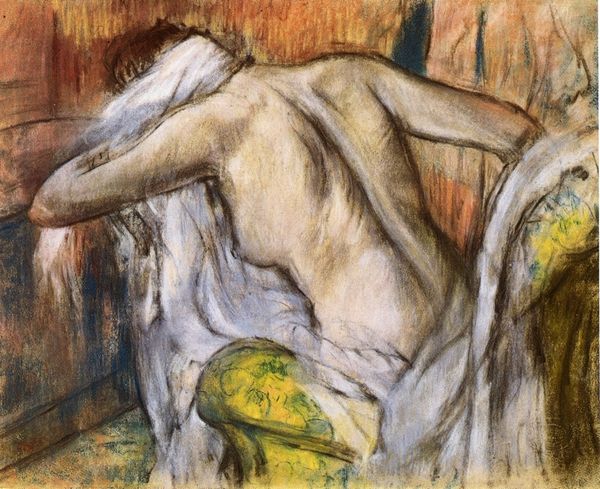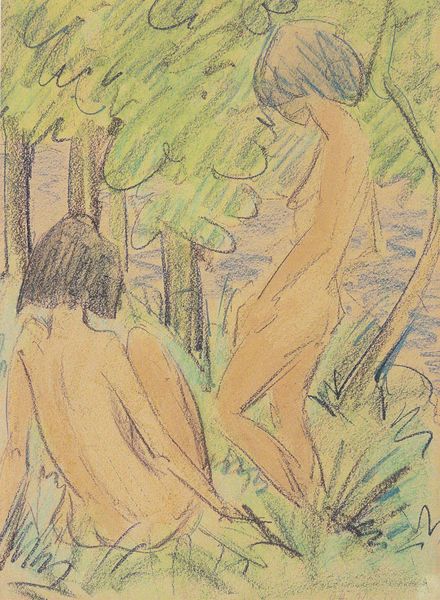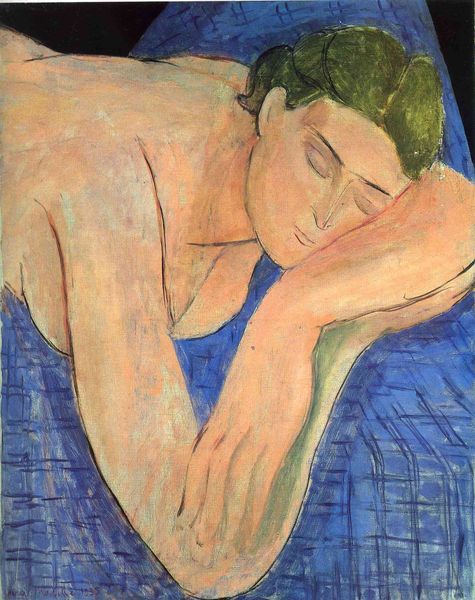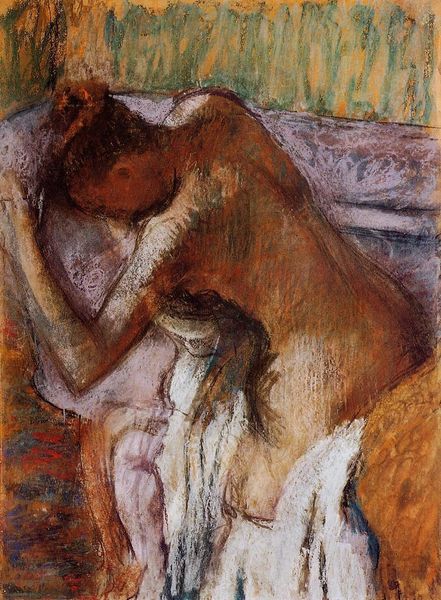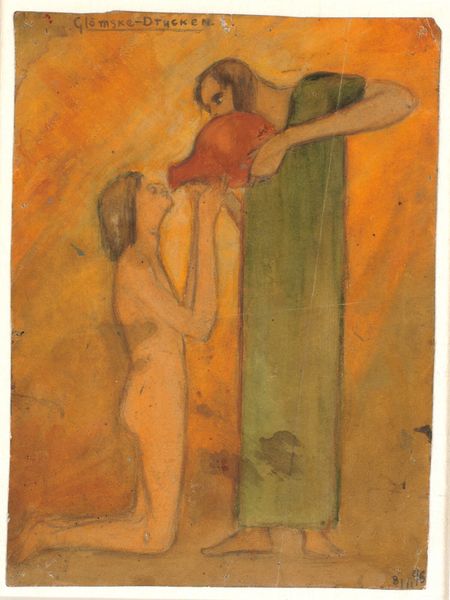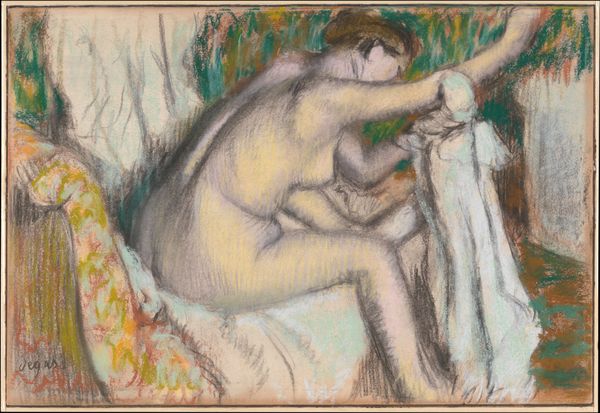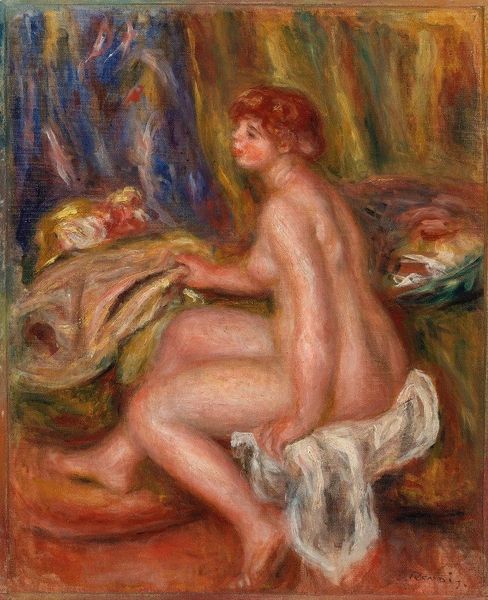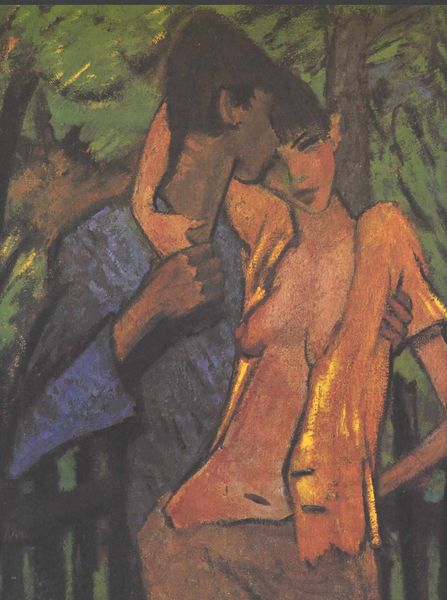
painting, oil-paint, impasto
#
portrait
#
self-portrait
#
painting
#
canvas painting
#
oil-paint
#
oil painting
#
impasto
#
famous-people
#
post-impressionism
Dimensions: 61 x 50 cm
Copyright: Public domain
Curator: This is Paul Gauguin's "Self-portrait with Mandolin," painted in 1889. It’s an oil on canvas and exemplifies the post-impressionist style. Editor: My initial response is melancholy. The averted gaze and the muted color palette create a sense of introspection, perhaps even a touch of despair. Curator: I think that feeling comes from the tumultuous period in Gauguin's life. It’s situated after his time in Brittany and just before his first voyage to Tahiti. There's a profound sense of dislocation and searching for meaning. The choice to include the mandolin might reflect a yearning for harmony or a lost sense of cultural belonging. Editor: I’m struck by the composition itself. The strong diagonal of the mandolin, contrasted with the simplified background shapes – the forest, the hinted seascape. It's almost a stage set for his own self-analysis. Notice how the color isn't used naturalistically. It's a symbolic language, with those ochre yellows, that pink highlighting around the neck. It feels very deliberate. Curator: Exactly. And understanding his motivations regarding identity and artistic expression is vital to a reading. His deliberate departure from Western norms, the rejection of academic art… all become political acts of self-definition. He sought to express a more “primitive” or authentic self, though of course, that notion itself is highly problematic, viewed through a contemporary lens. Editor: Yes, there is an undeniable element of performance. And his use of impasto—you can almost feel the physicality of the paint and his gestures. That physicality is vital; it’s where you grasp his own internal struggle, right there on the canvas. Curator: Considering the context of colonialism and Gauguin's own later appropriation of Tahitian culture, this earlier self-portrait speaks volumes about his evolving, and ultimately flawed, sense of self and his relationship with the 'other.' Editor: This piece encourages me to reconsider notions of 'authenticity' in art. To look beyond surface representations and examine the raw emotions conveyed through his deliberate distortion of color and form. Curator: Absolutely. It highlights how the search for artistic truth often intertwines with complex historical and cultural forces, influencing not only the artist but the artwork's lasting resonance.
Comments
No comments
Be the first to comment and join the conversation on the ultimate creative platform.
